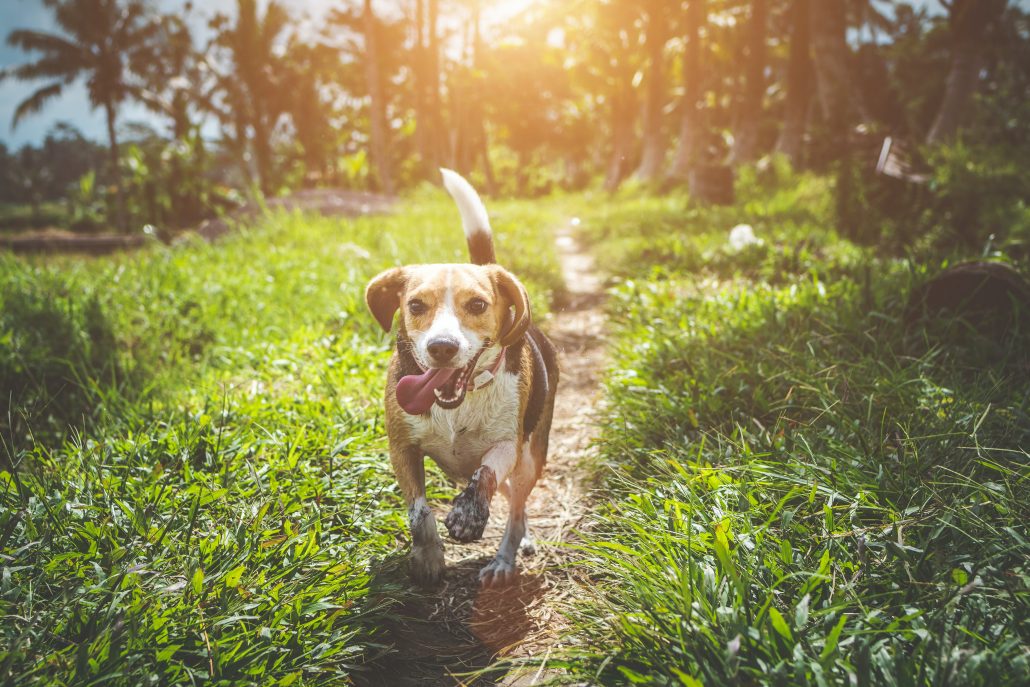Wondering about the signs of heatstroke in dogs? Unlike humans that sweat, dogs expel heat from their bodies by panting. When panting is not enough, the temperature of the dog’s body increases, and they will suffer a heat stroke that can become fatal if not treated immediately.
Summer in Australia means relaxation and fun in the sun, but high temperatures will put your dog at risk of heat exhaustion. To make sure all of your fur baby family members remain healthy and cool this summer, read on to learn how to avoid, diagnose and treat heat stroke in dogs.
What is Heatstroke In Dogs?
Heat stroke in dogs, also called hyperthermia, happens when your pet’s body temperature increases above a safe range and is unable to control its own body heat. This ranges from mild heat exhaustion, which can be treated at home, to extreme heat stroke, at which point your pet can lose consciousness, run high fever, or even suffer organ failure.
Since dogs prefer to pants rather than sweat, they are much more susceptible to heat than humans are. Luckily, heat exhaustion is easily preventable — even in the summer days of the dog.
What Triggers Heatstroke In Dogs?
Any hot environment can cause a heat stroke in dogs. The most common cause is the reckless behavior of a pet owner, such as leaving a dog in a car or failing to provide water and shade while outside.
Some dogs are more susceptible to heat strokes than others. Dogs with thick hair, short noses or those suffering from medical problems are predisposed to heat strokes. Even dogs who enjoy regular exercise and playtime should be closely monitored for signs of heat stroke, particularly on hot and humid days.
How to Detect Heatstroke In Dogs
Keep an eye out of these common symptoms of heat exhaustion and heat stroke:
1. Excessive panting or trouble in breathing
If your dog is constantly or quicker than normal (hyperventilation), it may be overheated. Dogs with flat faces like pugs are more vulnerable to heat exhaustion because they can’t pant as effectively.
2. Dehydration
Signs of dehydration include dry nose, noticeable tiredness, heavy panting, and swollen eyes.
3. Excessive sleeping
Keep an eye out for a lot of drool or drool that is thicker and stickier than normal.
4. Fever
If your dog’s nose is dry and hot instead of wet and cold, they may have a fever. Body temperatures above 103 ° F are considered abnormal.
5. Gums of bright red, gray, purple, or blue
If your dog’s gums are different in color than usual, they may be dehydrated.
6. There is a shortage of urine
If your pet has difficulty producing urine, it could be dehydrated or overheated.
7. A short pulse
The best way to take your dog’s pulse is to put your hand on your chest above your front elbow joint. If their pulse appears to be raised, it may be overheated. (Normal pulse rate depends on the size of the dog — big dogs appear to have slower pulses, whereas small dogs and puppies have very fast pulses.)
8. Muscular tremors
If your dog is trembling or trembling regardless of outside temperature, it could be caused by heat exhaustion.
9. Lethargy and weakness
Overheating can cause dogs to sleep more than usual or to have problems standing up or walking.
10. Vomiting or diarrhoea
Abnormally soft stools, or blood stools, are a significant warning sign of heat exhaustion.
11. Dizziness
If your dog appears to have trouble walking straight or keeps bumping into furniture, it may be light-headed from dehydration or heat exhaustion.

How To Treat Heatstroke In Dogs:
- Take your dog to a cooler location (preferably indoors) or in the shade right away.
- Lower the temperature of their bodies by wetting them deeply with cool water. Don’t use cold water. It seems counter-intuitive, but cooling too quickly can potentially be just as dangerous as heat exhaustion. Using lukewarm water instead of cool for very young dogs or puppies.
- Apply more cool water to your ears and paws. This helps to reduce the fever.
- Place your dog in front of a fan to dry it off. If you have a handy pet thermometer, check their temperature every few minutes (note: do not use a glass thermometer that your dog can bite and break). Once the temperature drops to 103 degrees (F), remove the fan and avoid applying water.
- As your four-legged friend keeps cooling down, give your dog a small amount of lukewarm or cool water to drink. Avoid ice water or cold water.
- Call your veterinarian as soon as you can. Even if your dog appears to be recovering, it may need to be treated for shock, dehydration, kidney failure, and other potential complications of heat exhaustion. Your vet will be able to give you advice on the next steps.If your dog loses consciousness or seems to be seriously ill (vomiting, seizing, etc.) get to a veterinary hospital immediately.
These are the most prominent and easily noticeable symptoms of heat exhaustion, but there are many more. If your dog has been acting ill, exhausted or otherwise odd during the hot summer months, don’t ignore it! If you are in doubt, call your nearest vet. Keeping your dog happy and secure is the most important thing to do.

